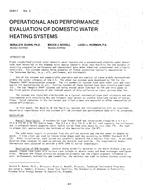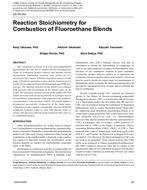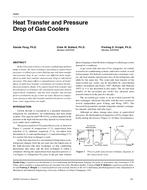Track: HVAC&R Systems and Equipment
Sponsor: 5.10 Kitchen Ventilation, 5.4 Industrial Process Air Cleaning (Air Pollution Control)
Chair: Derek Schrock, Member, Halton Company, Scottsville, KY
This seminar provides an overview of the updated requirements for certifying pollution control units and guidance for how these requirements may impact future codes and standards. Electrostatic precipitators will be presented with a focus on the balance between cost and performance and their effectiveness at smoke and odor control. Additional presentations will show how electrostatic precipitators can be used effectively to clean emissions in challenging applications, such as highly-populated urban areas with mixed-use areas. The use of ozone to clean odor from commercial cooking emissions will also be discussed.
1. Safety Requirements of Pollution Control Units: The Timely Release of New UL8782
Mark Skierkiewicz, P.E., Member, UL, LLC, Northbrook, IL
Pollution Control Units have been used in the marketplace for several years. However, with increasing pollution control regulation, and the boom of mixed-use (residential / commercial) complexes, there has been a significant increase in the use of these products. This led to a stronger demand for standardized safety requirements. This session focuses on the timely development and publication of UL8782, Outline of Investigation for Pollution Control Units for Commercial Cooking Operations released January 30, 2017. This session also reveals plans for inclusion of these requirements into the appropriate ASHRAE Standards and installation Codes.
2. Pollution Control Technologies: Rising to the Challenge
Chris Lowell, Member, Air Scrubbers, Sanford, NC
Pollution control units (PCUs) utilized for commercial kitchen exhaust is increasingly more common due to tighter environmental regulation, as well as a greater propensity to install foodservice establishments in population-dense and mixed-use areas. This presentation explains the process of selecting and applying the scrubbing device for commercial kitchen exhaust air.
3. Electrostatic Pollution Controls: Performance and Maintenance Considerations
Russ Robison, Member, Gaylord Industries, Tualatin, OR
Balancing performance, capital costs and cost of operations; Electrostatic Precipitator based pollution control units have been providing reliable cost effective smoke and odor abatement for nearly four decades. This presentation focuses on the performance deliverables of these units and where the application of this technology makes great sense.
4. The Use of Ozone Generators in CKV Exhaust
Mark Tilles, Associate Member, AirMaid/Interzon, Stockholm, Sweden
The use of ozone generators in CKV exhaust treatment is a new technology recently introduced to North America, yet one that has been in widespread use throughout Europe for about a decade. Although ozone is already applied in many areas of science and industry, this presentation focuses upon its use in CKV. Topics covered include methods of production, benefits realized, limitations and code-compliance requirements for grease applications.
Presented: June 27, 2017, 11:00 AM-12:30 PM
Run Time: 90 min.
This is a zip file that consists of PowerPoint slides synchronized with the audio-recording of the speaker (recorded presentation), PDF files of the slides, and audio only (mp3) for each presentation.
Citation: ASHRAE Seminar Recordings, 2017 ASHRAE Annual Conference, Long Beach , CA
Product Details
- Published:
- 2017
- Units of Measure:
- Dual
- File Size:
- 1 file , 110 MB
- Product Code(s):
- D-LB17Sem45


